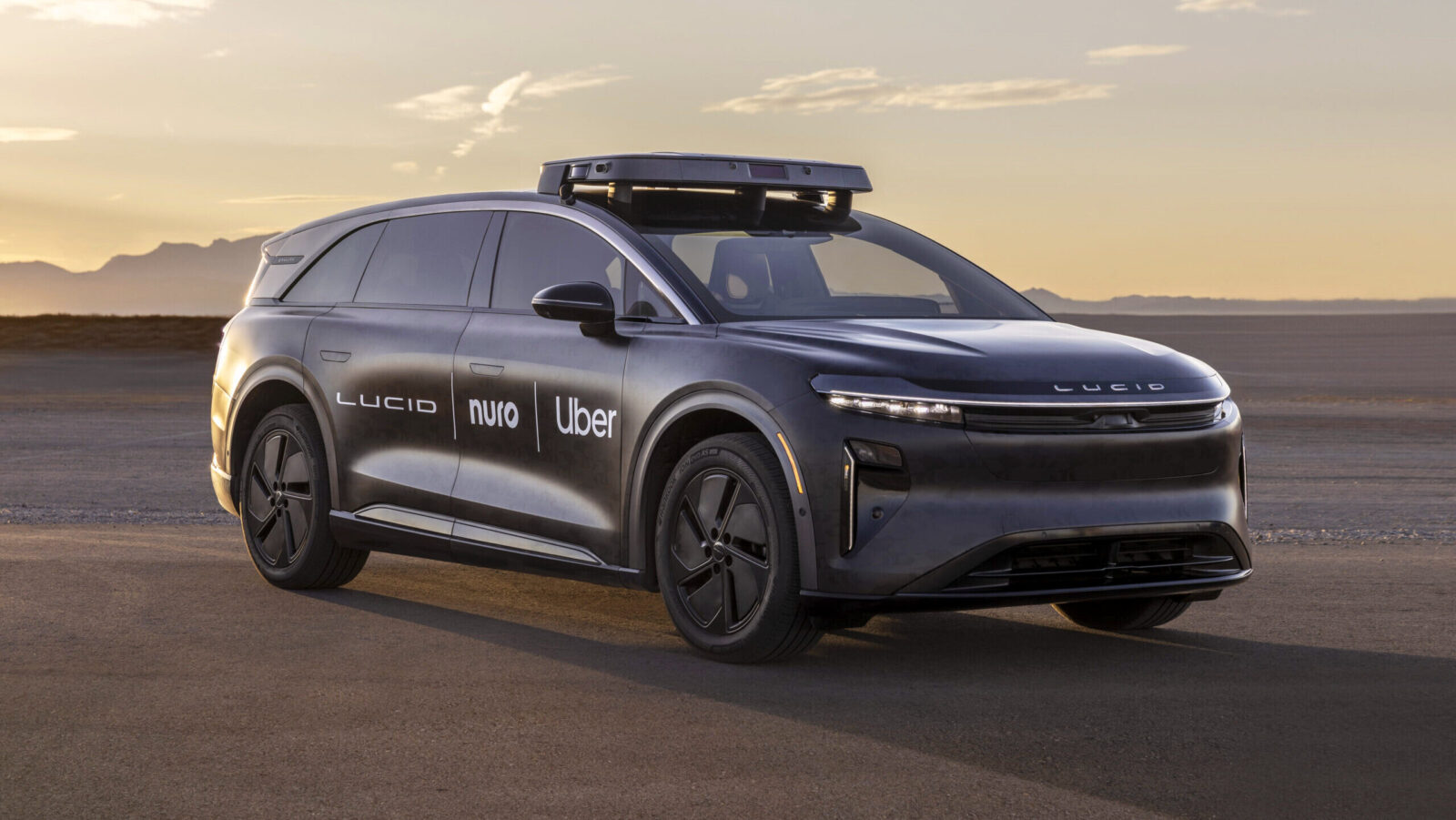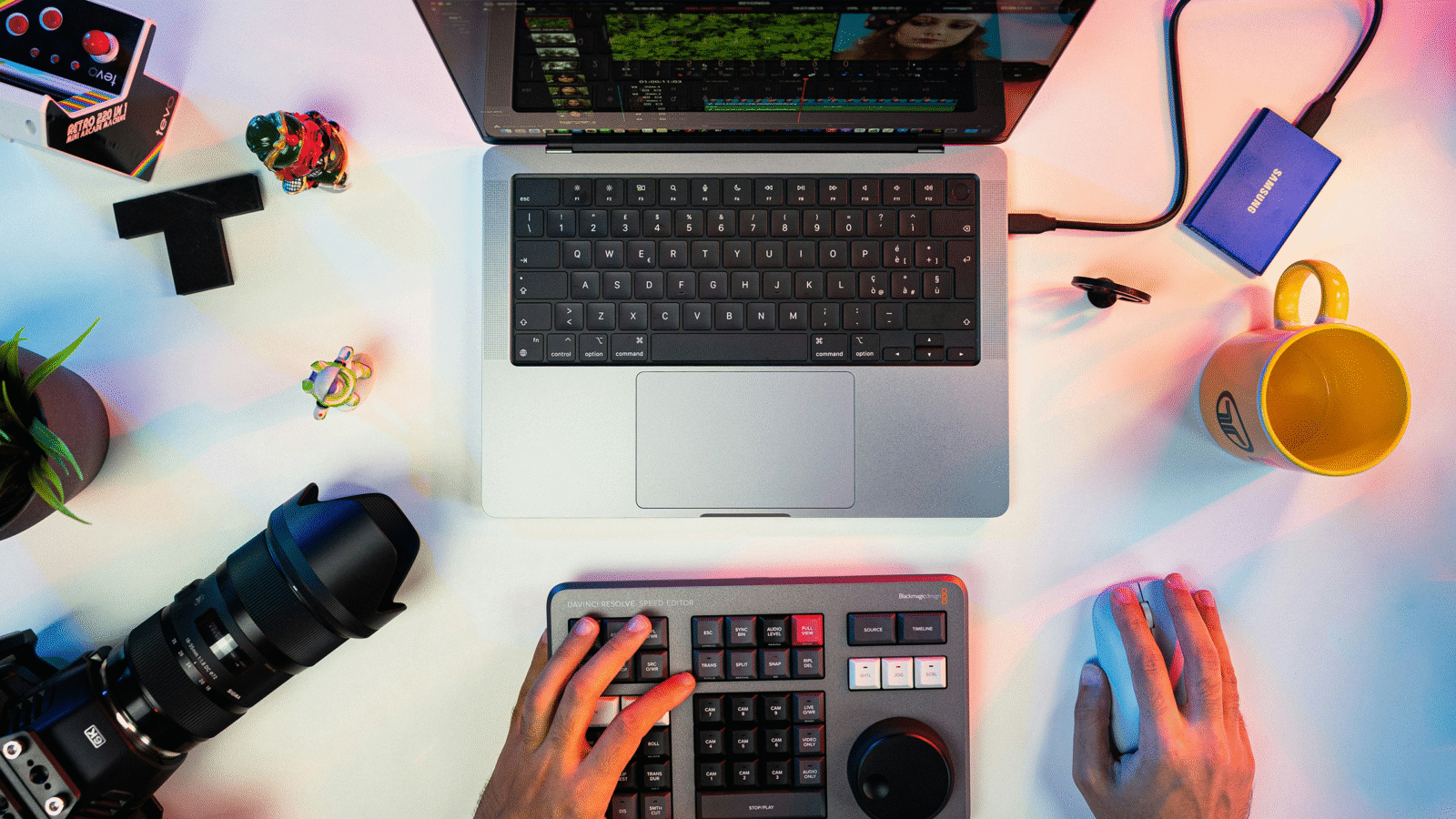Good morning, and happy Friday.
Whoa! Flights to Majorca are going for the low, low price of … whatever artificial intelligence thinks you’d consider spending to go there.
Or that’s how it might soon work, anyway. According to a Fortune report, Delta Air Lines is shifting away from “static pricing” toward an individualized pricing strategy that utilizes AI. In fact, in its earnings report last week, President Glen Hauenstein confirmed the company has already used the tool to sell about 3% of its tickets on domestic flights so far this year and wants to bump that figure up to 20% by year’s end. Fortune reports that Hauenstein told investors the major airline eventually wants 100% of tickets to be sold using the tool. Hey, Delta AI (if you happen to be reading this): We definitely have a price point in mind for an impulsive trip to a certain Spanish island. It may be lower than you hope, but we still think it’d make for a pretty good deal!
Uber Paying $300M Fare in Robotaxi Deal

Uber is hopping into a carpool with electric vehicle startup Lucid and self-driving software firm Nuro to develop robotaxis that will ferry passengers on the rideshare giant’s network.
A pact announced Thursday calls for Uber to invest $300 million in Lucid and buy at least 20,000 robotaxis from the company over six years. It’s a great endorsement for Lucid, which has yet to fully recover from a February selloff prompted by its CEO resigning amid concerns it was burning through cash at a bonfire pace. Lucid’s shares popped 36% Thursday. But the deal left some scratching their heads.
Dealing from a ‘Weak Hand’
Uber’s very real drivers make for uniquely human experiences: Two old friends lovingly reunited after 20 years, in one viral example. But the company has wisely struck over a dozen autonomous driving partnerships as emotionless robots make their way into the taxi market. Among them are deals with Google’s Waymo in Atlanta and Austin, as well as with Chinese autonomous vehicle-tech company Pony AI in the Middle East, British AV-tech company Wayve in London, and Volkswagen and Intel spinoff Mobileye in Los Angeles. The battle for the market is expected to be fierce and involve some of the world’s most powerful firms: Tesla kickstarted its own robotaxi service in Austin last month, while Amazon subsidiary Zoox is testing robotaxis in multiple US cities.
Uber’s partnership with Lucid is set to be launched in a “major US city” in late 2026 before expanding to other markets. Lucid, which reported a net loss of $366 million in the first quarter after losing $3 billion the previous year and has seen its stock decline nearly 95% since 2021, receives funding to outfit its assembly line with hardware suitable for making autonomous vehicles with technology like Nuro’s. Nuro, meanwhile, is getting a “multi-hundred-million-dollar” investment of its own. Uber, of course, theoretically has 20,000 future electric autonomous robotaxis to look forward to, but some observers say it may also be buying a headache:
- Analysts at Wedbush said in a note that the deal highlights Uber’s weak hand in the robotaxi race and, by bringing on potential competitors, may damage its ongoing relationship with Waymo. They did not hold back, with one especially withering comparison: “This feels like the search equivalent of doing a deal with AskJeeves, Overture or Infoseek back in the day to protect against Google on the horizon. Meanwhile, Tesla and Waymo just keep building AI infrastructure and data collection.”
- Meanwhile, Wedbush noted that pouring hundreds of millions into Lucid and Nuro and buying 20,000 cars could “impair the capital efficiency story” that has revived Uber’s stock, propelling it to a record high as recently as last week. Then, there’s the simple math: Lucid delivered just 10,000 vehicles last year, and Wedbush said it would likely take more capital to make 20,000 self-driving AVs for a single client in the next six years.
Farming Returns: Last month, Bank of America analysts predicted the autonomous vehicle market could be worth $1.2 trillion by 2040. Apart from the obvious stocks set to benefit, such as Tesla and Waymo-owner Alphabet, they also flagged insurance providers like Progressive as under-the-radar beneficiaries. Sensor-makers, including Aptiv and Mobileye, are poised to rake in cash as well, as is $4 trillion chip giant Nvidia, which counts most major robotaxi and autonomous vehicle companies among its customers. BofA also flagged farming, construction and equipment manufacturers — Caterpillar and John Deere are already making and testing autonomous trucks and tractors.
Final Week: Get $12 Cocktails For Life

When Death & Co first opened on New Year’s Day 2007, $12 was the price of their signature cocktails. Now they’re bringing it full circle for investors: You have just a few days left to lock in $12 cocktails for life when you invest.
Death & Co is defining modern hospitality, driving $14M in annual revenue and projecting 205% growth over the next two years. With award-winning books and placements on multiple “World’s 50 Best Bars” lists, they’re uniquely positioned for strategic (and exponential) growth. Their biggest milestone yet is unfolding as we speak, the recent launch of a new boutique hotel in Savannah.
The $12 shareholder-only cocktail menu perk offer ends at midnight on 7/22. Don’t miss your chance to own a piece of the $750B hospitality industry.*
White House Push for Cane-Sugar Coke Reignites Soda Wars
Mexican Coke could soon lose its elite status at American taquerias. President Trump said Wednesday that the Coca-Cola Co. has agreed to switch from using high-fructose corn sugar in its namesake soda to real cane sugar in the US. Coca-Cola hasn’t confirmed the change.
As investors prepped for Coke’s cane-sugar future, corn syrup producers Archer-Daniels-Midland and Ingredion both saw their shares fizzle. Futures contracts for corn faltered while ones for raw sugar rose.
Complex Sugars
Not everyone agrees with the admin’s stance against corn syrup. Coca-Cola said on X that high-fructose corn syrup is safe and “actually just a sweetener made from corn.” Medical experts haven’t found any significant differences between corn- and cane-derived sugar.
Big Corn also cobbled together a defense. A trade group representing corn producers said that a swap from corn to cane could cost the US thousands of jobs and hurt farms’ income with “no nutritional benefit.”
Corn has been ingrained in the soda biz for decades:
- Coca-Cola originally switched from using cane sugar to corn syrup in the 1980s to cut costs — cane sugar, which is mainly produced in tropical and subtropical countries, was expensive because of tariffs, while US corn was (and still is) supported by subsidies. PepsiCo CEO Ramon Laguarta told CNBC Thursday that sugar costs more in the US than other countries and that a sugar swap hinges on making it less expensive.
- Today, tariffs are once again driving up the price of sugar. US sugar cost double the global rate last year, the Sweetener Users Association found. Food and beverage companies have already hiked their prices to reflect tariffs, and swapping a main ingredient could mean more increases.
Syrupy Slope: Trump himself is a known aficionado of Diet Coke, and his health secretary, Robert F. Kennedy Jr., has pushed for food and beverage companies to nix ingredients like corn syrup, seed oils and artificial food dyes. (Just don’t come for aspartame.) PepsiCo yesterday said it will relaunch Lay’s and Tostitos with all-natural dyes and flavors next year. Kraft Heinz, Nestlé and General Mills have all pledged to stop using artificial dyes in their products. But phasing out non-natural dyes, which several major food companies said they don’t use in the majority of their products, may be easier than ditching corn syrup.

Stop Wasting Your Marketing Budget On Ads Nobody Sees. Your prospects tend to ignore traditional ads, but they trust YouTube creators, podcast hosts, and newsletter writers with influence in their industries. CreatorNet matches B2B brands like yours with these very voices — influencers who actually drive effective lead generation and efficient prospecting. Get your custom ad strategy built around measurable ROI.
Gaming Platform Roblox Adds Age-Verification to Safeguard Kids
You must be this tall to climb aboard the Roblox ride. Or at least to access certain features.
On Thursday, the massive video game platform/timesucking virtual sandbox announced it would impose an age-verification requirement on its massive, mostly young user base (there are nearly 100 million daily active players, per the company’s latest earnings report). It’s just the latest destination in the virtual realm to hire a digital doorman, and the addition comes as the company faces unrelenting criticism that it has failed to protect underage users.
Roblocked
In October, short-selling hedge fund Hindenburg Research released one of its patented (and final) investigative reports on the company, pointing to known instances of predators using the platform to communicate with children and claiming the platform did little to protect its mostly underage user base. About 40% of Roblox users are under the age of 13. Then, in February, Roblox and video game chat platform Discord were hit with a lawsuit stemming from similar allegations.
Ergo: The new age verification features announced Thursday. In a blog post yesterday, the company stated that players will be prompted to upload a video selfie to be processed through age estimation tools from identity verification company Persona (although users can also opt out by simply scanning a government-issued ID). The long and short of it? Access to peer-to-peer communication features will be differentiated across three different age groups: users under 13, users between 13 and 17, and users 18 or older.
The new guardrails may help the platform stay one step ahead of a growing crop of age verification laws, though there’s still a broader debate about the best practices for implementing them:
- Six states so far this year, including Wyoming and Ohio, have passed bills requiring digital age verification to access certain sites, following in the footsteps of more than a dozen states before them, according to a tracking tool from the Free Speech Coalition (which opposes such laws, claiming they are “ineffective, unconstitutional and dangerous”).
- Last year, Meta rolled out new restrictions for teenage Instagram users. However, the company and other providers of large platforms tend to argue that age verification should be left to app store owners, such as Apple and Google, rather than app owners like themselves.
Big Robucks: The moves could make Roblox a safer (virtual) place for kids to play — and potentially earn money. Seriously. The platform, which essentially allows users to create games within the games, has been paying out big bucks recently to top user-creators. According to a recent Los Angeles Times feature, some kid game designers are even scoring millions of dollars. Hey, who said video games are a waste of time?
Extra Upside
- Unicorn Scribes: Newsletter and subscription platform Substack raised $100 million in funding, at a valuation of $1.1 billion.
- Well, That Settles It: Mark Zuckerberg and former Meta executives agreed to settle a shareholder lawsuit that sought $8 billion over allegations they harmed the company by repeatedly allowing violations of Facebook users’ privacy.
- Finding the Right HR Software Is A Nightmare. SelectSoftware Reviews cuts through the chaos with expert recommendations tailored to your needs — plus a $50 gift card after vendor demos. Get your free HR Software matches.**
** Partner
Just For Fun
Disclaimer
*This is a paid advertisement for Death & Company Regulation A offering. Past performance is not indicative of future results. Please read the offering circular at invest.deathandcompany.com

